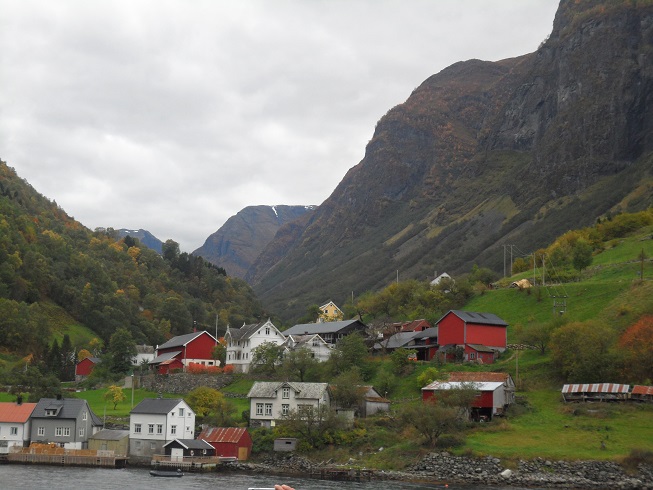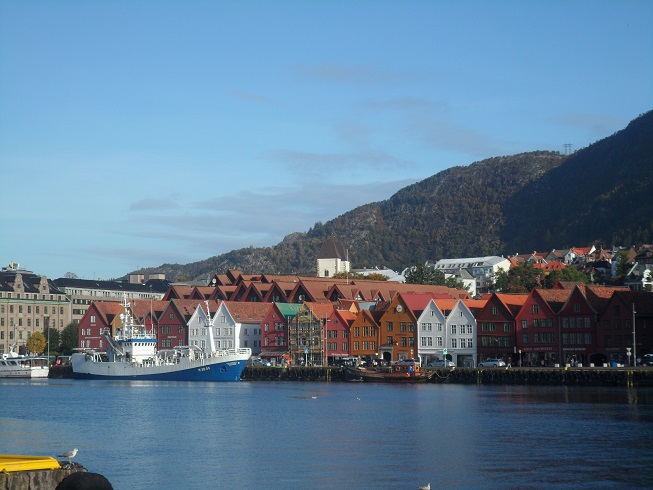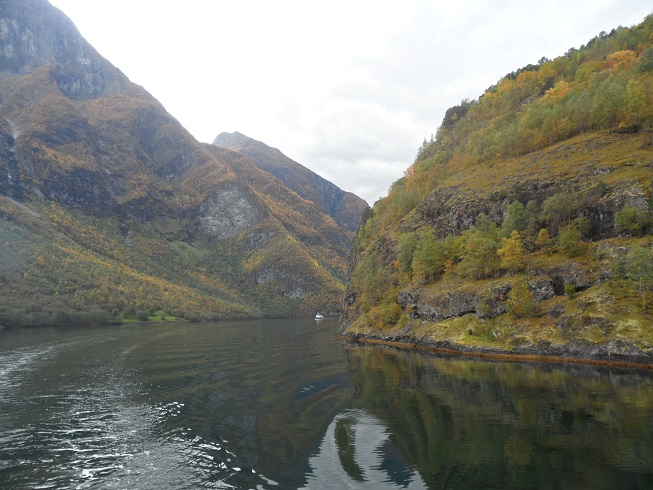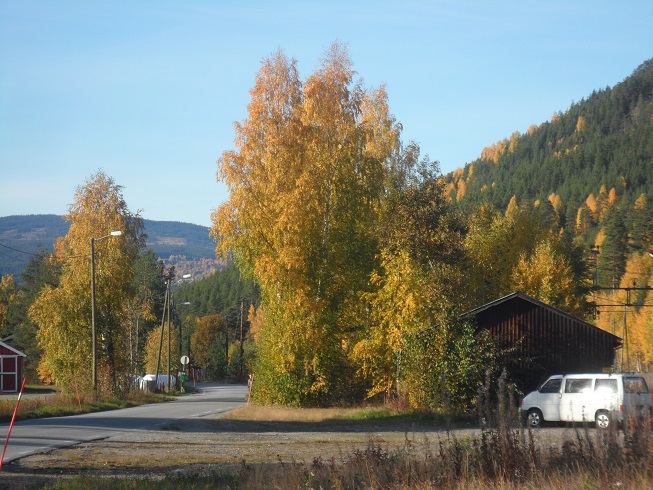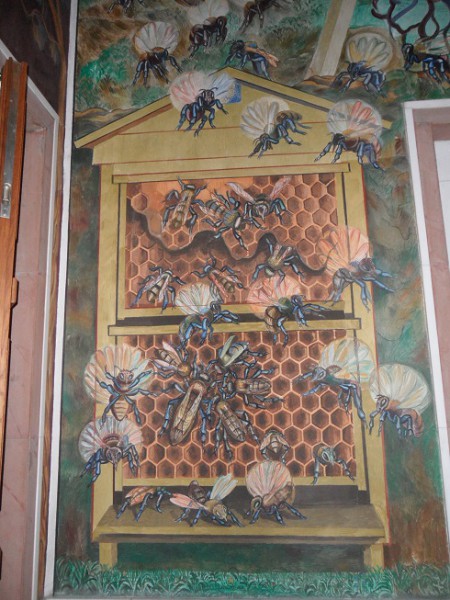The beekeeper and I recently had the pleasure of a short break in Norway, a country of amazing beauty but phenomenally expensive. Visiting both Bergen and Oslo, our mini break took us to both town and country, along deep fjords, over mountains, past glaciers and over city tram tracks.
Despite visiting in the first few days of October, we were blessed with some sunny days and quite comfortable temperatures. But it’s not always like that, and we saw plenty of last season’s snow up on the mountain tops. Perhaps better known as the “land of the midnight sun”, the corollary is that it’s also the land of the midday night. As beekeepers in the UK we dread the freezing, damp winters here but further north (and southern Norway is roughly level with northern Scotland) the winters are harder – and much longer.
So we weren’t expecting to come across large apiaries and local honey on sale everywhere. And we didn’t. (To be fair, we did find some local honey in the marketplace in Oslo. Sold in plastic tubs and without the constraints of EU labelling, to our English eyes I must say it didn’t look the most appealing product, but it was available.)
However some last-minute Googling before we set off across the North Sea confirmed that beekeeping is alive and well there, with something like 90 beekeepers in the Bergen area alone. In a land where there are government taxes on sugar (and goodness knows, all foodstuffs there seem to cost the earth) beekeepers are able to claim a tax rebate, completing an annual return and recouping the tax. Since we need to feed sugar water, syrup and/or candy in the UK, the Norwegians’ need must be much greater to ensure reasonable over-wintering rates. On the plus side for them, varroa – which is now endemic in the UK – has barely reached Scandinavia, with just a handful of hives showing infection each year. Similarly, other pests and diseases like hive beetle, foulbrood are virtually unheard of, perhaps because of the sterilising effect of the harsh winter climate. The huge distances between (clusters of) hives also reduces the risk of disease and pest transmission between apiaries.
The state plays quite a large part in Norwegian life, and government controls extend to the variety of bees one may keep. Honeybees are all of the species Apis melifera, but there are three common strains that are kept for honey harvest: the black bee, the Buckfast bee, and the Carnica bee. These are all kept in the UK and beekeepers can mix’n’match strains as they wish, but in Norway you may only keep the strain(s) permitted in your particular area. There are also strict controls on the movement of bees within the country and their import. Maybe as a result of these controls, and the need to really prepare for winter, overwintering losses in Norway average about 10% (i.e. 10% of hives die out each winter), which is lower than
recent UK winters (in 2012/2013 one third of UK colonies were lost).
So perhaps there are lessons to be learnt from the Norwegian experience – and at the very least, our admiration goes out to beekeepers who successfully keep healthy, productive colonies in a land of awesome beauty and huge challenges.
As a postscript, during our stay in Oslo we visited the City Hall there. A grand building (and free entry – very much worth a visit) it’s almost a shrine to Norway’s socialist beliefs of the 1950s, with vast murals depicting labour, toil and the reaping of communal benefits from them. In one room an entire wall is given over to a representation of this ideal in the form of a beehive, with the workers selflessly toiling for the good of the whole community.

